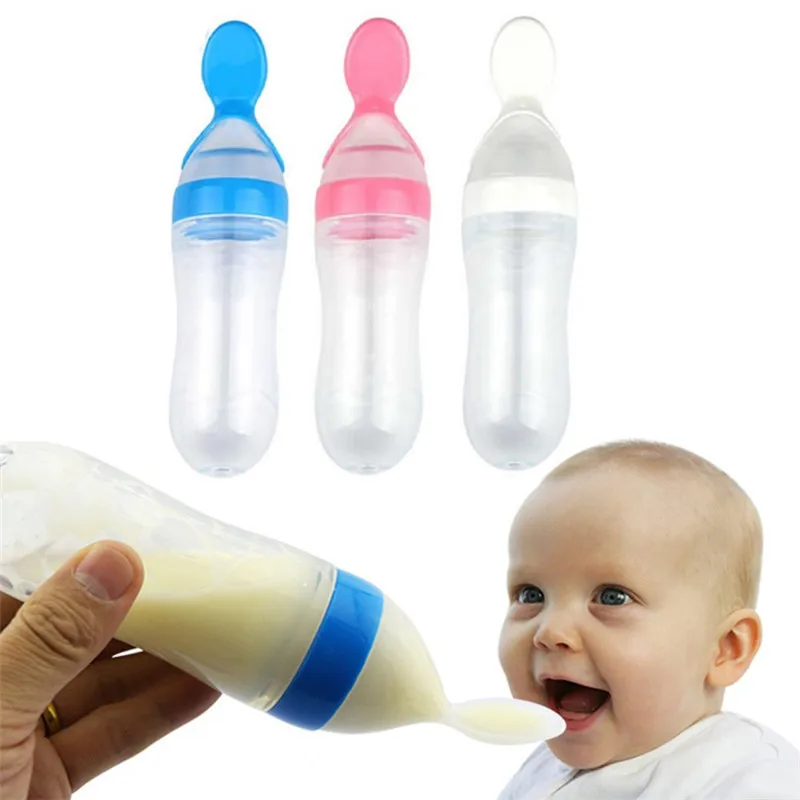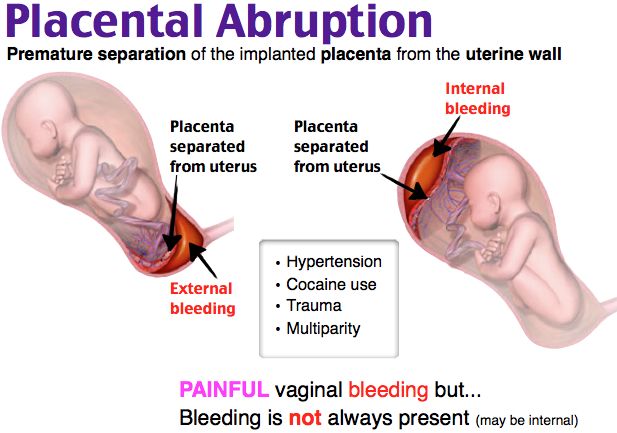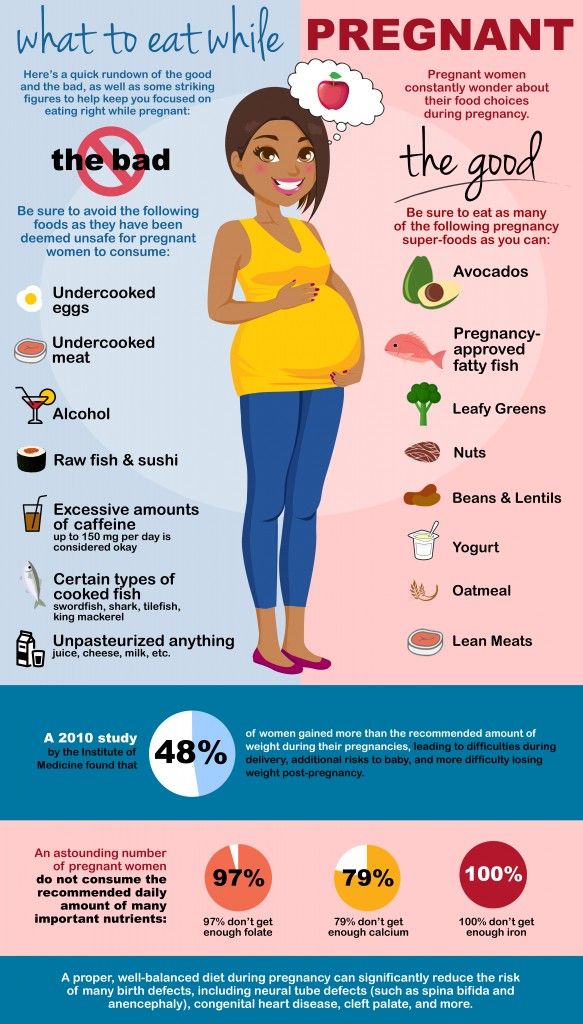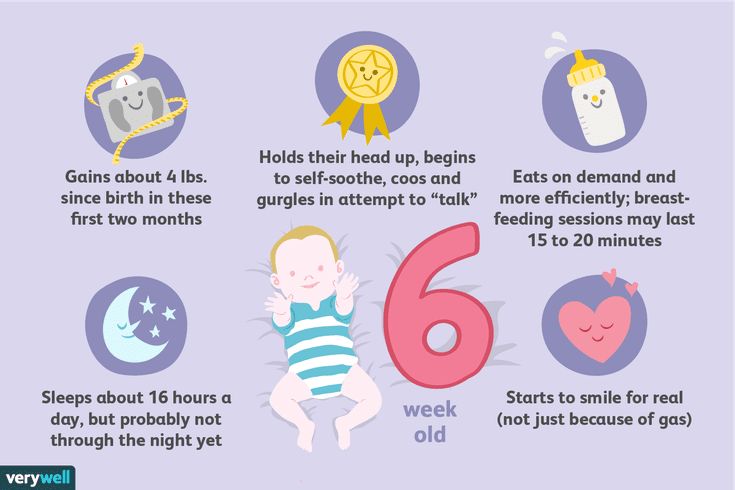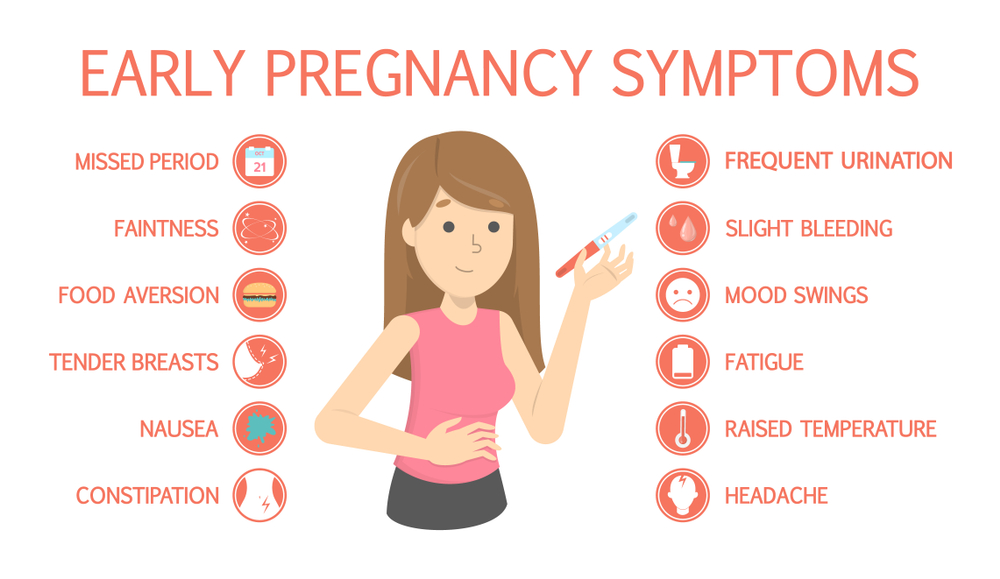Babies with bottles
Bottle-feeding babies: giving the bottle
About bottle-feeding
If your baby can’t always feed directly from your breast, you might choose to bottle-feed with expressed breastmilk. Or you might need to feed your baby infant formula, which is the only safe alternative to breastmilk.
Before you bottle-feed your baby, it’s important to know how to clean and sterilise bottle-feeding equipment, as well as how to prepare, store and warm bottles of formula. This will help to keep your baby safe from infection and make sure baby is getting the right nutrition.
Getting the right flow when bottle-feeding
To test the flow of the formula or breastmilk, hold the bottle upside down when it’s filled with liquid at room temperature. The liquid should drip steadily from the teat but not pour out.
If you have to shake the bottle vigorously to see the drip, the flow is too slow. Your baby might go to sleep before drinking what they need.
When you feed your baby, you might see a little leakage at the corners of your baby’s mouth. This doesn’t mean the flow is too fast. It’s nothing to worry about. It will stop as your baby gets older.
If you have trouble finding a teat with a flow to suit your baby, try a faster teat rather than a slower one. You might need to try a few different teats before you find one that suits.
Giving baby the bottle
Make yourself comfortable and cuddle your baby close to you, holding baby gently but firmly. It’s better for your baby to be on a slight incline so any air bubbles rise to the top, making burping easier.
Put the teat against your baby’s lips. Your baby will open their mouth and start to suck. Keep the neck of the bottle at an angle so it’s filled with formula or breastmilk.
When your baby stops sucking strongly or when about half of the formula or breastmilk has gone, gently remove the bottle and see whether baby wants to burp. Once you’ve tried burping your baby, you can offer the bottle again.
Paced bottle-feeding
Babies who are normally breastfed might find it hard to pace themselves when bottle-feeding, particularly if they’re premature. This is because they’re used to controlling the flow of breastmilk. Sometimes these babies can drink too much too quickly.
This is because they’re used to controlling the flow of breastmilk. Sometimes these babies can drink too much too quickly.
Paced feeding can sometimes help. This involves holding your baby in an upright position and letting them rest every few minutes. If you’re interested in paced bottle-feeding, it’s best to get help from your child and family health nurse or a lactation consultant.
Holding, cuddling and talking to your baby during feeding will help baby develop and grow. It’s also a great opportunity to bond with your baby.
When baby doesn’t finish the bottle or goes to sleep while feeding
Don’t worry if your baby doesn’t finish the bottle. Babies are very good at judging how much they need, so you can let your baby decide when they’ve had enough formula or breastmilk.
If your baby goes to sleep during a feed, put baby over your shoulder, rub their back, and stroke their head, legs and tummy. This can help your baby to wake up. A nappy change is a good way to wake up your baby if that doesn’t work.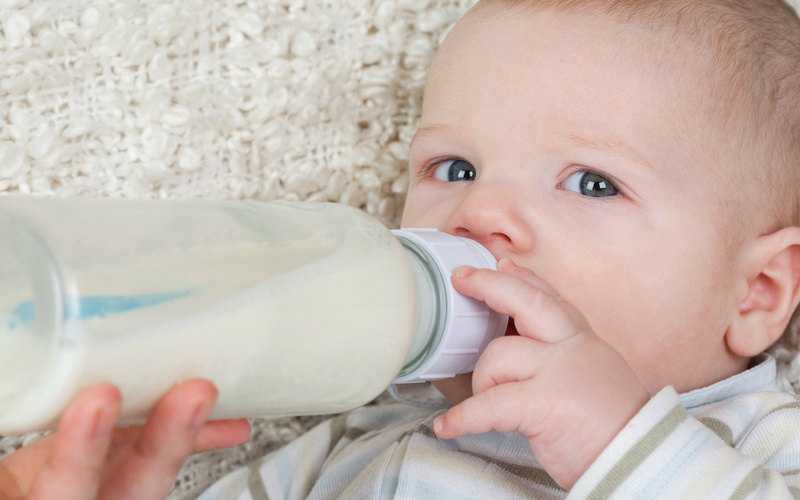
Wait until your baby is properly awake before offering the rest of the formula or breastmilk.
If there’s any formula or breastmilk left in the bottle, throw it away after one hour. When your baby drinks from a bottle of formula or breastmilk, bacteria from their mouth get into the milk. The bacteria can grow and make your baby sick if you give your the baby the half-finished bottle later.
When baby refuses the bottle
Babies sometimes refuse a bottle altogether. Here are things to try if this happens:
- Try a new feeding position or change the feeding environment. For example, move around while you’re feeding, find a quieter place to feed, or play some relaxing background music.
- Try again later when your baby is more settled. For example, give your baby a bath and then try again.
- Ask your partner or another family member to give your baby the bottle.
- Try using a different teat. If the flow of formula or breastmilk is too slow, it might frustrate your baby.
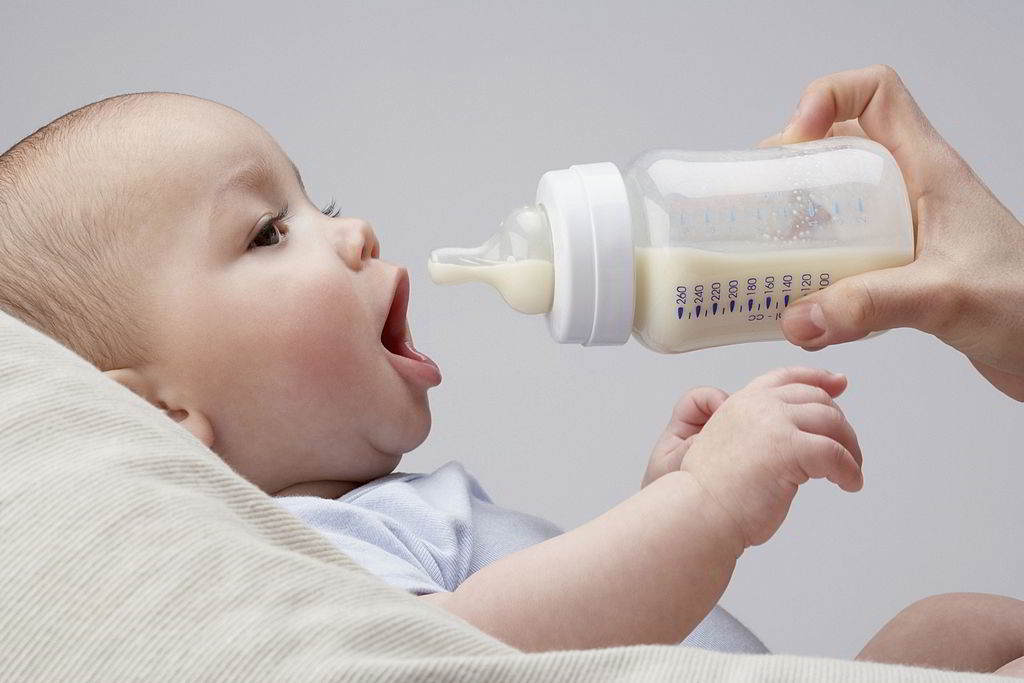
- Let your baby open their mouth for the bottle when they’re ready, rather than putting the teat into their mouth.
- Offer the formula or breastmilk from a small cup or spoon. To do this, sit your baby up and offer them small sips.
If your baby is regularly refusing the bottle, you could try adjusting your routine.
If you think your baby is refusing the bottle because they’re unwell, treat your baby’s symptoms or take your baby to see your GP.
How much do bottle-feeding babies drink?
Newborn babies commonly have 6-8 feeds every 24 hours, but there’s no set amount of food or number of feeds your baby should have. Different babies drink different amounts of formula or breastmilk. Some might have feeds close together and others further apart. And it can change from day to day.
Just feed your baby whenever they’re hungry. You’ll see baby cues that say ‘I’m hungry’ – for example, your baby will make sucking noises or start turning towards the breast or bottle.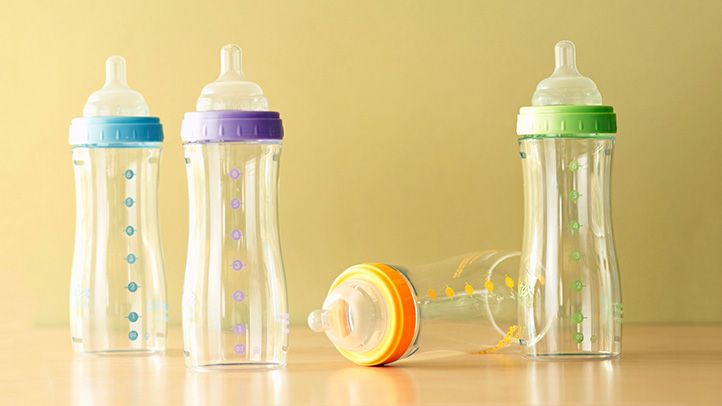 If your baby stops sucking or turns their head away from the bottle, you’ll know they’ve had enough.
If your baby stops sucking or turns their head away from the bottle, you’ll know they’ve had enough.
As your baby eats more and more solid food, the total amount of breastmilk or formula they take in a day will decrease. The amount of breastmilk or formula will also decrease as your baby starts to drink from a cup instead of a bottle.
Some babies never drink the ‘recommended amount’ for their age and size, and others need more. Plenty of wet nappies, consistent healthy weight gains, and a thriving, active baby mean all is well. If you’re concerned about how much breastmilk or formula your baby is taking, talk to your child and family health nurse or GP.
Bottle-feeding in bed: issues and risks
Sleep associations
If your baby gets used to falling asleep with a bottle in bed, they might depend on it to get to sleep. This can make it more difficult for your child to fall asleep or settle for sleep independently.
Bottle-feeding in bed also has several risks for your baby.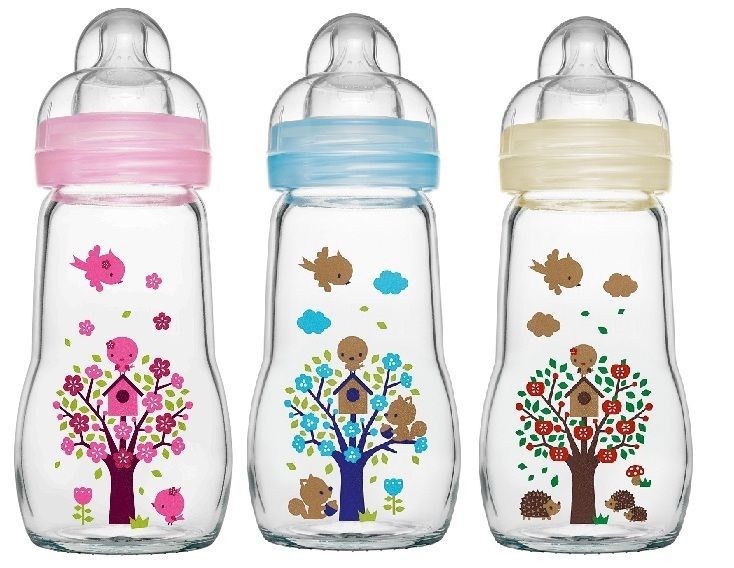
Choking
Babies who fall asleep while bottle-feeding can draw liquid into their lungs. They might then choke on it or inhale it.
Tooth decay
Babies have less saliva in their mouths to protect their teeth during sleep. If your baby falls asleep with a bottle, the lactose in the milk can build up on your baby’s teeth, putting your baby at risk of tooth decay.
Ear infections
If your baby drinks while lying flat, milk can flow into the ear cavity, which can cause ear infections.
It’s best to put your baby to bed without a bottle or to take the bottle away after your baby has finished feeding.
Using a feeding cup
When your baby is around 6 months old, you can help your baby start leaning to drink from a cup. It’s best to stop using bottles by the time your baby is 12 months old.
You should continue to thoroughly wash and sterilise feeding cups containing infant formula or breastmilk until your baby is 12 months old.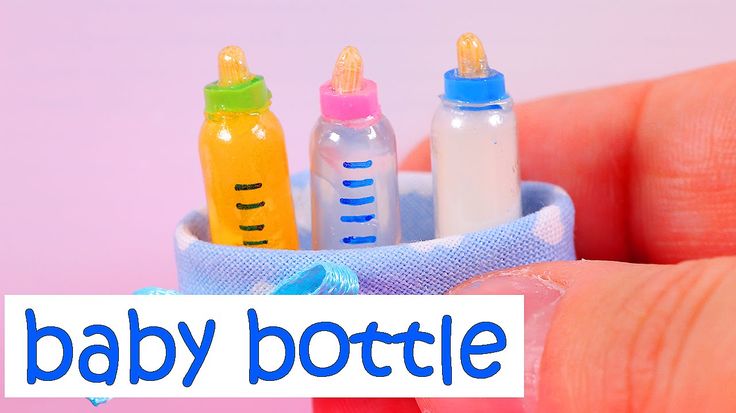
Stopping the Bottle (for Parents)
Reviewed by: Madhu Desiraju, MD
Primary Care Pediatrics at Nemours Children's Health
en español Dejar el biberón
Many toddlers become attached to their bottles. Besides providing nourishment, bottles also mean comfort and security.
It's important for parents to start weaning babies from bottles around the end of the first year and start getting them comfortable drinking from cups. The longer parents wait to start the transition, the more attached kids become to their bottles and the harder it can be to break the bottle habit. Longer bottle use may lead to cavities or cause a child to drink more milk than they need.
Switching from bottle to cup can be challenging, but these tips can make the change easier for parents and kids.
How Should I Start the Switch?
Most doctors recommend introducing a cup around the time a baby is 6 months old. In the beginning, much of what you serve in a cup will end up on the floor or on your baby.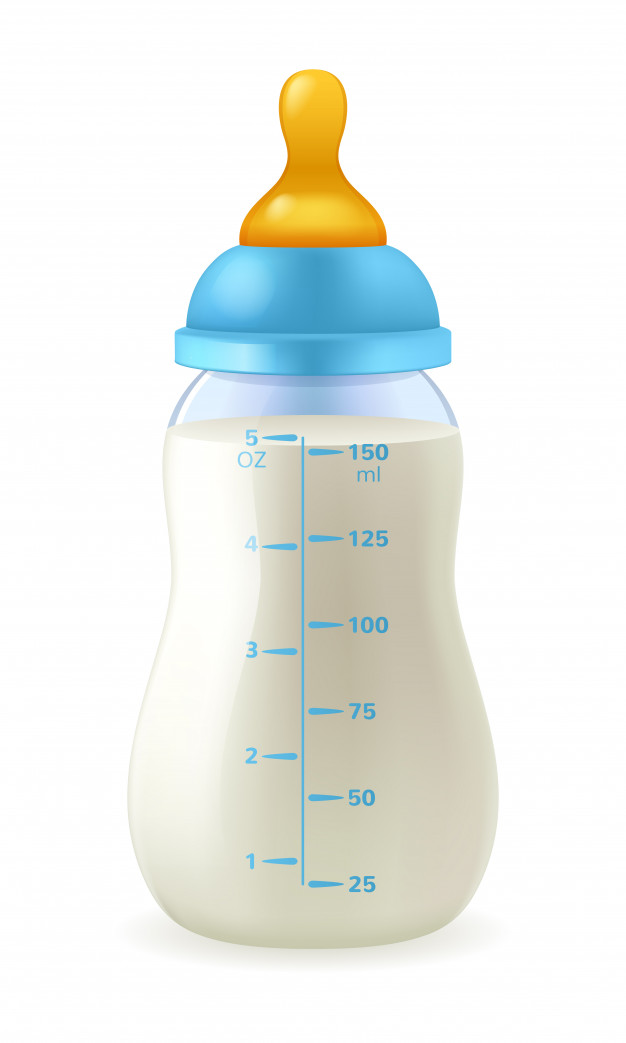 But by 12 months of age, most babies have the coordination and hand skills needed to hold a cup and drink from it.
But by 12 months of age, most babies have the coordination and hand skills needed to hold a cup and drink from it.
Age 1 is also when doctors recommend switching from formula to cow's milk. It can be a natural change to offer milk in a cup rather than a bottle.
If you're still breastfeeding, you can continue feeding your baby breast milk, but you may want to offer it in a cup.
Tips to Try
Instead of cutting out bottles all at once, try dropping them from the feeding schedule over time.
For example, if your baby usually drinks 3 bottles each day, begin by stopping the morning bottle. Instead of giving a bottle right away, bring your baby to the table and after the feeding has started, offer milk from a cup. You might encourage your baby by saying something like "You're getting so big now and can use a cup like mommy."
As you try to stop the morning bottle, keep offering the afternoon and evening bottles for about a week. That way, if your child asks for the bottle you can say that one is coming later.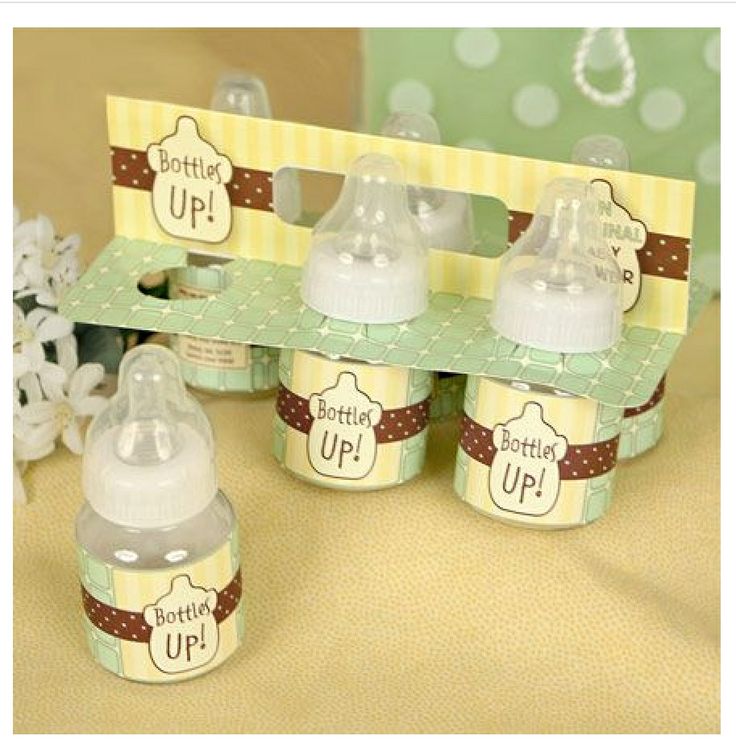
The next week, stop another bottle feeding and provide milk in a cup instead. Try to do this when your baby is sitting at the table in a high chair.
Generally, the last bottle to stop should be the nighttime bottle. That bottle tends to be a part of the bedtime routine and is the one that most provides comfort to babies. Instead of the bottle, try offering a cup of milk with your child's dinner and continue with the rest of your nighttime tasks, like a bath, bedtime story, or teeth brushing.
Other tips to keep in mind:
- Spill-proof cups that have spouts designed just for babies ("sippy cups") can help ease the move from the bottle. Dentists recommend sippy cups with a hard spout or a straw, rather than ones with soft spouts.
- When your child does use the cup, offer plenty of praise. If grandma is around, for example, you might say, "See, Emma is such a big girl she drinks milk in a cup!"
- If you keep getting asked for a bottle, find out what your child really needs or wants and offer that instead.
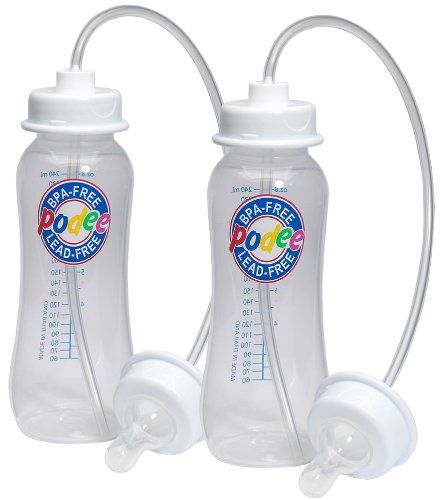 If your baby is thirsty or hungry, provide nourishment in a cup or on a plate. If it's comfort, offer hugs, and if your little one is bored, sit down and play!
If your baby is thirsty or hungry, provide nourishment in a cup or on a plate. If it's comfort, offer hugs, and if your little one is bored, sit down and play! - As you wean your baby from the bottle, try mixing the milk in the bottle with water. For the first few days, fill half of it with water and half of it with milk. Then slowly add more water until the entire bottle is water. By that time, it's likely that your child will lose interest and be asking for the yummy milk that comes in a cup!
- Get rid of the bottles or put them out of sight.
If you have problems or concerns about stopping the bottle, talk with your child's doctor.
Reviewed by: Madhu Desiraju, MD
Date reviewed: June 2022
Baby won't take a bottle | Philips Avent
search support iconSearch Keywords
Home ›› What to do when your baby refuses a bottle
↑ top
any problems.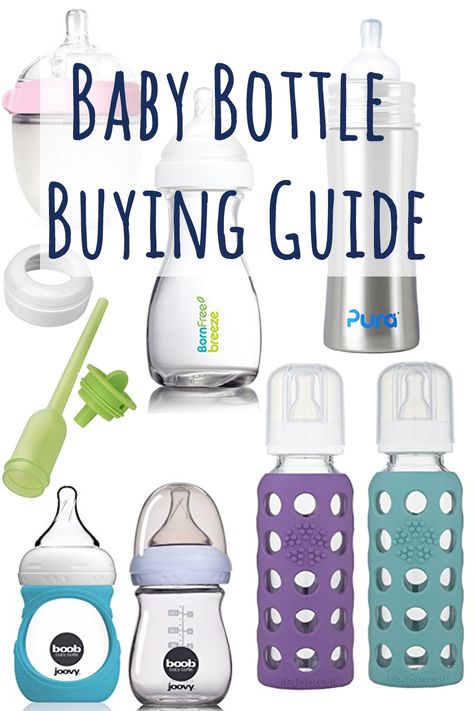 If your breastfed baby refuses a bottle, don't worry. This is a common occurrence in many babies who are used to breastfeeding. Obviously, this can create certain difficulties for moms, especially if you need to return to work in the near future.
If your breastfed baby refuses a bottle, don't worry. This is a common occurrence in many babies who are used to breastfeeding. Obviously, this can create certain difficulties for moms, especially if you need to return to work in the near future.
3 Philips Avent products to help you bottle feed:
So why is your baby refusing to bottle and crying? There are many ways to quickly and easily teach a breastfed baby to a bottle. Here are important tips on what to do when your baby refuses a bottle.
Is the baby refusing the bottle? Take a step back
If your baby cries while bottle feeding, the first thing to do is to start over and rethink your feeding approach and technique. Try the following steps when bottle feeding your baby: [1]
- Lift and tilt your baby's head forward. Before inserting the pacifier into the baby's mouth, make sure that the baby's head is raised and tilted over his body to avoid choking: so that the baby does not choke and have the opportunity to burp during bottle feeding.

- Insert the pacifier. Bring the pacifier to the baby's lips and gently guide it into the baby's mouth. In no case do not try to press the nipple on the baby's lips and try to push it into his mouth. After touching the pacifier to the baby's lips, wait for the baby to open his mouth and take the pacifier.
- Hold the bottle at an angle. Tilt the bottle at an angle so that the nipple is only half full. So the child can eat at his own pace.
- Let the baby burp during and after feeding. It can be useful for a child to burp not only after feeding, but also approximately in the middle of the process. This will help reduce gas or tummy discomfort that your baby may experience from swallowing too much air.
- Stop in time, do not overfeed the baby. If the baby begins to turn his head away from the bottle or closes his mouth, then he is full and you need to stop feeding.
- Perhaps the flow of milk from the nipple to the baby is weak or, on the contrary, too fast, so he is naughty and refuses the bottle.
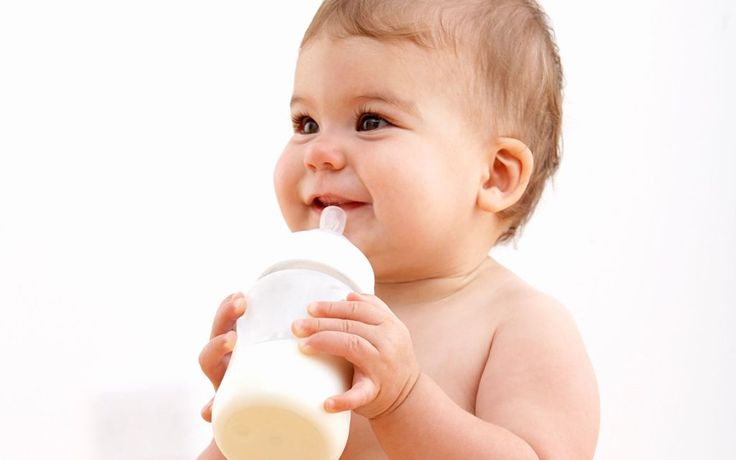 Try changing the nipple to a nipple with a different flow.
Try changing the nipple to a nipple with a different flow.
Other tips if your baby refuses the bottle
If you've followed the steps above and your baby still refuses the bottle, don't worry. There are other ways to help bottle feed your baby. Here are some simple tricks you can add to your bottle feeding process. [2]
1. Remind your child about mom.
Sometimes a child can be fed by someone other than his mother - dad, grandmother or, for example, a nanny. If your baby fusses while bottle feeding, try wrapping the bottle in something that smells like mommy, like a piece of clothing or some fabric. This will make it easier to feed the baby when the mother is not around.
2. Try to maintain skin contact while bottle feeding.
Some babies need contact with their mother, so try bottle feeding while leaning against you. However, some babies are better at bottle feeding when they are in the exact opposite position than when they are breastfed.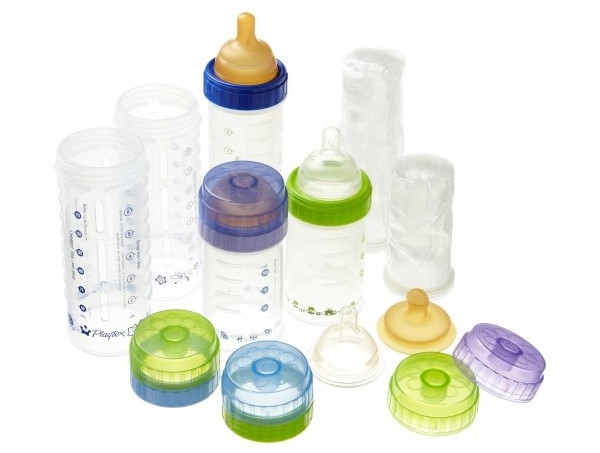 For example, there is a position with bent legs. Lay the child on your bent knees, facing you, pointing the child's legs towards your stomach. During feeding, the baby will be able to look at you and contact you in this way. If your baby refuses a bottle, experiment to see which works best.
For example, there is a position with bent legs. Lay the child on your bent knees, facing you, pointing the child's legs towards your stomach. During feeding, the baby will be able to look at you and contact you in this way. If your baby refuses a bottle, experiment to see which works best.
3. Move while feeding.
Sometimes all it takes to get your baby to take the bottle is a little wiggle or walk. The next time your baby starts crying while bottle feeding, try moving around a little rhythmically to calm him down.
4. Try changing the milk temperature.
If the baby still does not want to take the bottle, check if the milk in the bottle is too hot or too cold. Before feeding, put some warm breast milk on the inside of your wrist to check the temperature. Milk should be warm, but if it seemed hot to you, just place the bottle for a short while under a stream of cold water.
Choosing the right bottle for your baby If you plan to combine bottle feeding with breastfeeding, it is advisable to choose bottles with a nipple that will have a wide base as the bottle will grip closer to the breast.
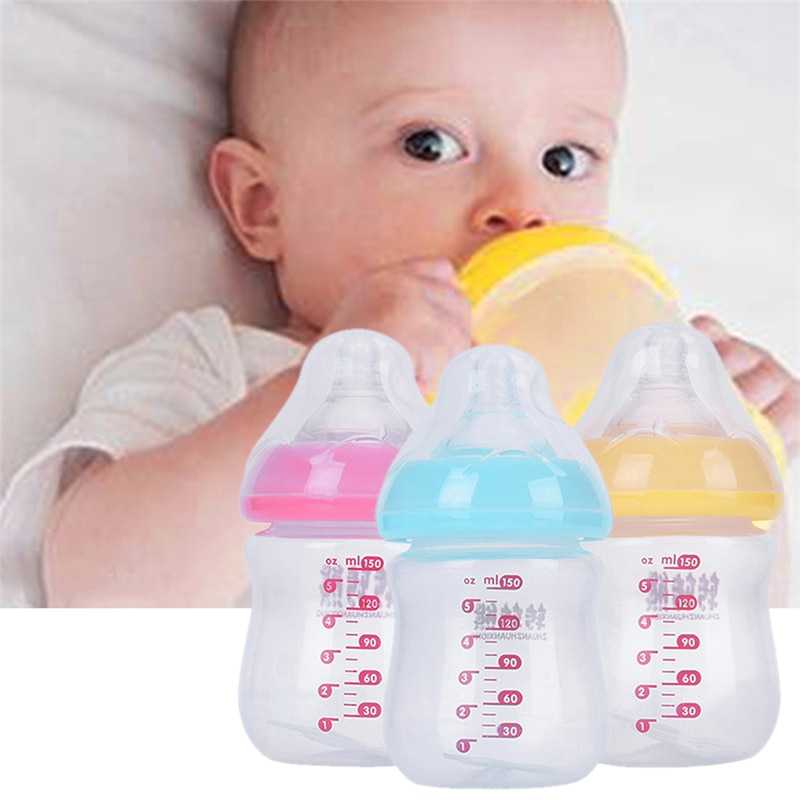 Also pay attention to the fact that the nipple is firm and flexible, the child must make an effort to drink from the bottle, as well as from the breast. Give preference to nipples with an anti-colic valve that vents air out of the bottle.
Also pay attention to the fact that the nipple is firm and flexible, the child must make an effort to drink from the bottle, as well as from the breast. Give preference to nipples with an anti-colic valve that vents air out of the bottle. Natural bottle allows you to combine breast and bottle feeding. 83.3% of babies switch from a Natural bottle to breastfeeding and back.*
If you choose a bottle for artificial feeding, traditional bottles are fine, but it is desirable that the nipple is made of a hypoallergenic material, such as silicone, has an anti-colic valve and did not stick together when bottle fed. In case your baby spit up often, then use special bottles with anti-colic and anti-reflux valve, which reduces the risk of spitting up and colic.
Bottle with unique AirFree valve reduces the risk of colic, gas and spitting up. With this bottle, you can feed your baby in an upright or semi-upright position to reduce spitting up. Due to the fact that the nipple is filled with milk and not air during feeding, the baby does not swallow air, which means that feeding will be more comfortable.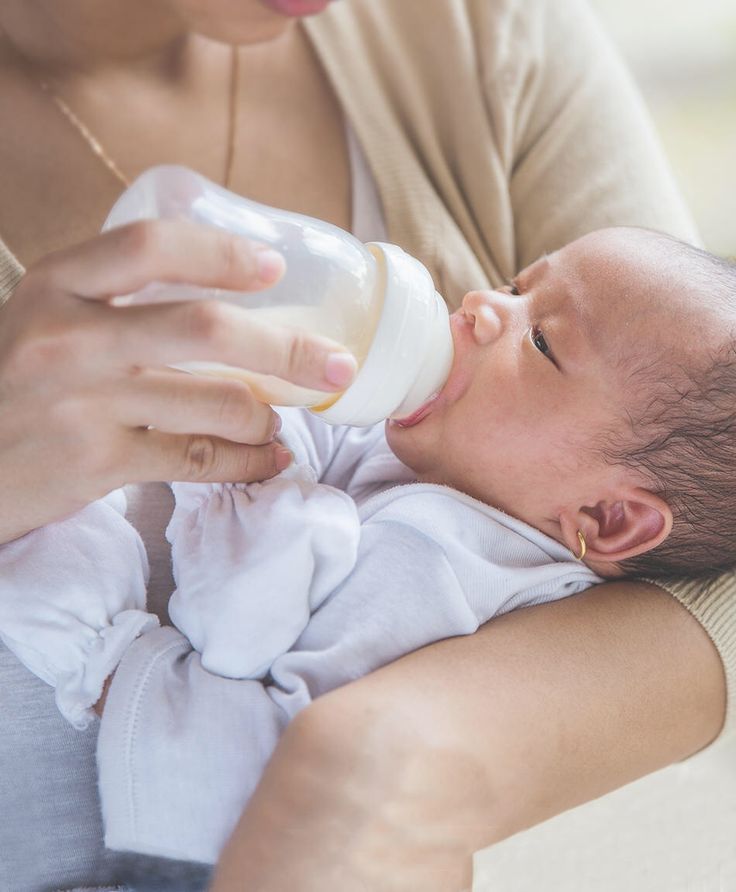
Both bottles are indispensable if you want to breastfeed, bottle feed or just bottle feed your baby.
“My baby refuses to breastfeed but bottle feeds – help!”
Sometimes a baby gets used to bottle feeding and refuses to breastfeed. Therefore, it is important to use bottles that are suitable for combining breastfeeding with bottle feeding. If, nevertheless, you are faced with the fact that the child refuses to take the breast, try using silicone nipple covers to make the transition from the bottle to the breast and back more imperceptible.
Remember that if you want to combine breastfeeding and bottle feeding, it is worth waiting at least a month before offering a bottle, so that you are lactating and have time to get used to each other and develop a breastfeeding regimen.
Breastfeed and bottle feed your baby with pleasure
Remember that it takes a while for your baby to get used to bottle feeding.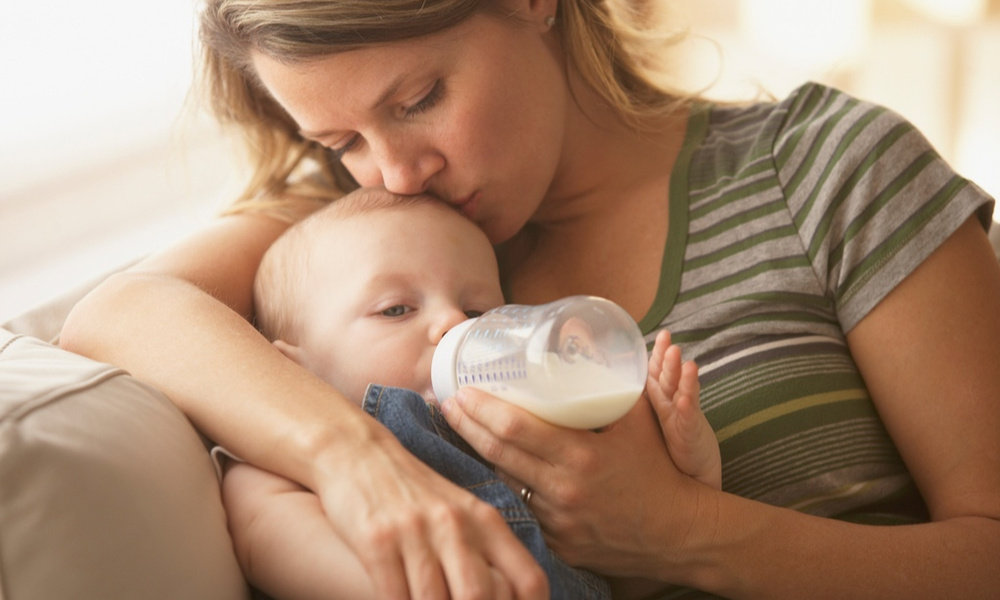 This is completely normal. If you have to go to work, be sure to set aside enough time to bottle train your baby beforehand.
This is completely normal. If you have to go to work, be sure to set aside enough time to bottle train your baby beforehand.
Remember that every child is different, so what works for one may not work for another. With a little time and patience, you will find out what works best for your baby when he refuses a bottle.
You will identify your child's unique needs. However, if your baby still refuses the bottle after all the steps above, check with your pediatrician.
Articles and tips from Philips Avent
References:
*O.L. Lukoyanova, T.E. Borovik, I.A. Belyaeva, G.V. Yatsyk; NTsZD RAMS; 1st Moscow State Medical University THEM. Sechenova, "The use of modern technological methods to maintain successful breastfeeding", RF, 10/02/2012 3 llli.org - The Baby Who Doesn't Nurse
llli.org - Introducing a Bottle to a Breastfed Baby
Baby+ app
Download the app and track your child's development and growth with trackers and save those special moments forever.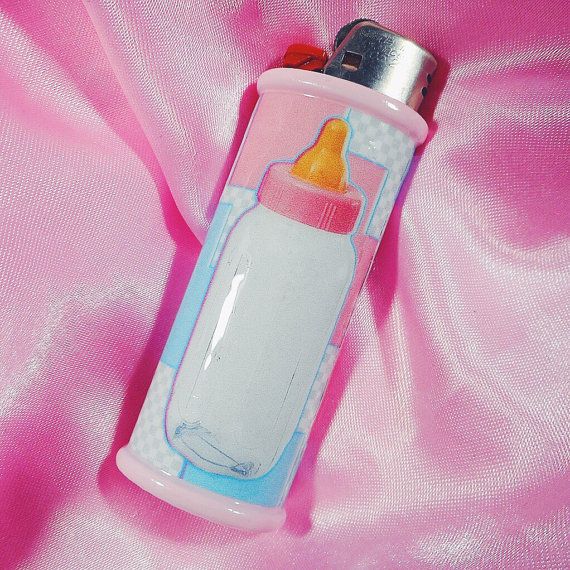
Download app:
You are leaving the Philips Healthcare (“Philips”) official website. Any links to third party websites that may be included on this site are provided solely as a convenience to you. Philips makes no warranties regarding any third party websites or the information they contain.
I understand
You are about to visit a Philips global content page
Continue
You are about to visit the Philips USA website.
I understand
Baby feeding bottle: the rules of a successful purchase - Parents.ru
Baby bottle
- Photo
- kupicoo/Getty Images/E+
Different shapes of feeding bottles currently available:90 90 from a classic cylinder to an oval with a hole in the middle. Narrow cylindrical containers can already be attributed to an outdated form, since it is not very convenient for the baby to hold such a container.
 Therefore, most mothers tend to bottles that have a narrowing in the middle - especially for children's hands. The bottle, curved in the middle, contributes to better filling of the nipple - the child swallows less air.
Therefore, most mothers tend to bottles that have a narrowing in the middle - especially for children's hands. The bottle, curved in the middle, contributes to better filling of the nipple - the child swallows less air. Additional protection against colic will be a special hole in the bottom, which can be opened during feeding - air will flow through it, which will relieve the pressure inside the bottle.
When choosing, also pay attention to how convenient it will be for you to wash the bottle. If its shape is too complex, then the brush may not reach some corners. It is convenient to fill and wash the bottle if its neck is wide. The shape of the bottle can be both straight and very intricate. The bottle in the form of a ring is convenient for the baby to hold, but it is not easy to wash it. Therefore, it is better to choose a feeding bottle without excessive folds - it is easier to care for. When your baby starts trying to hold the bottle by himself, opt for ribbed models or ones that taper down the middle.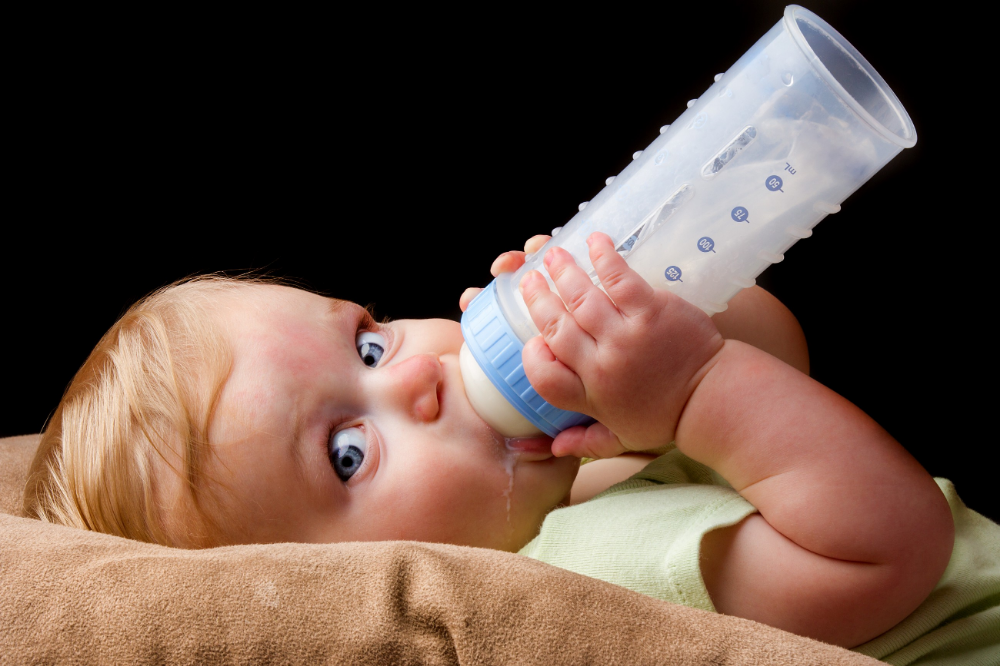
When choosing a bottle, you should also pay attention to the design of the nipple. Recently, manufacturers have begun to rely on the physiological shape of the nipple, which mimics the shape of the female nipple. This is very important if the baby is on a mixed diet, or if you are exclusively breastfeeding, but have to periodically express milk and give it from a bottle. Or you started to supplement the baby with tea or juice. Then such a nipple will help you to maintain natural feeding, as it makes the transition from breast to bottle easy and does not cause addiction.
- Photo
- Getty Images/Image Source
Special Purpose Bottles
Anti-Colic Bottles . This is the perfect dish for bottle-fed newborns. The biggest digestive problem in babies is the painful colic that comes from swallowing air. Anti-colic bottles are designed to prevent air from being swallowed during feeding.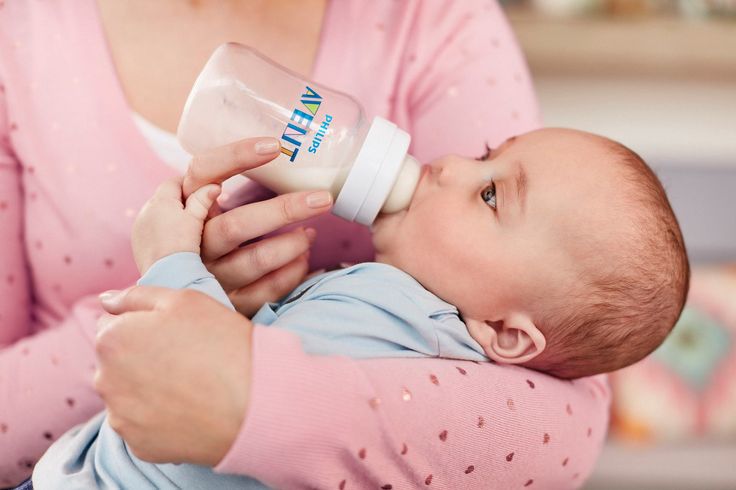 Each manufacturer offers its own know-how in solving this problem. Some have a removable system of pistons and valves that is installed in the neck, while others have an additional nipple with valves that prevent the formation of a vacuum in it. With such bottles, it is comfortable for the baby to suck, and then nothing disturbs in a dream.
Each manufacturer offers its own know-how in solving this problem. Some have a removable system of pistons and valves that is installed in the neck, while others have an additional nipple with valves that prevent the formation of a vacuum in it. With such bottles, it is comfortable for the baby to suck, and then nothing disturbs in a dream.
Physiological bottles are hemispheres that follow the shape of the female breast. These bottles have not just an unusual shape, but excellent functional features. Soft, like a large nipple with a hard bottom, they are ideal for breastfeeding babies. The fact is that due to their design, these bottles do not spoil the sucking habit of the breast in newborns. The child captures the nipple of a regular bottle only with his lips, he can take the same nipple in the same way as the mother's breast, and a small hole in such a nipple makes the baby work pretty hard to get food. Thus, sucking on such physiological bottles is not much different from sucking on the breast.![]()
Glass or plastic?
Above all, the bottle must be made from safe, durable and non-toxic materials. The bottles are glass and plastic. Glass-loving moms focus on easy cleaning — these bottles are easy to keep clean, as they won't stain when exposed to juice, yogurt, or soup. However, glass containers also have obvious disadvantages: they are heavy in weight for a baby, they can easily break, and besides, the liquid in them is heated for quite a long time due to the thickness of the glass.
Plastic bottles, on the other hand, can be stained by food ingredients. But at the same time they are safer for the baby, as he can easily hold the plastic in his hand. Plastic bottles weigh less, do not break, do not crack from boiling water and can have different shapes. Plastic ones are especially convenient for walking and on the road, and they are also indispensable when a child learns to drink from a bottle on his own.
- Photo
- FotoDuets/Getty Images/iStockphoto
How many bottles do you need and which ones
Choose the size of the bottle according to the intended use.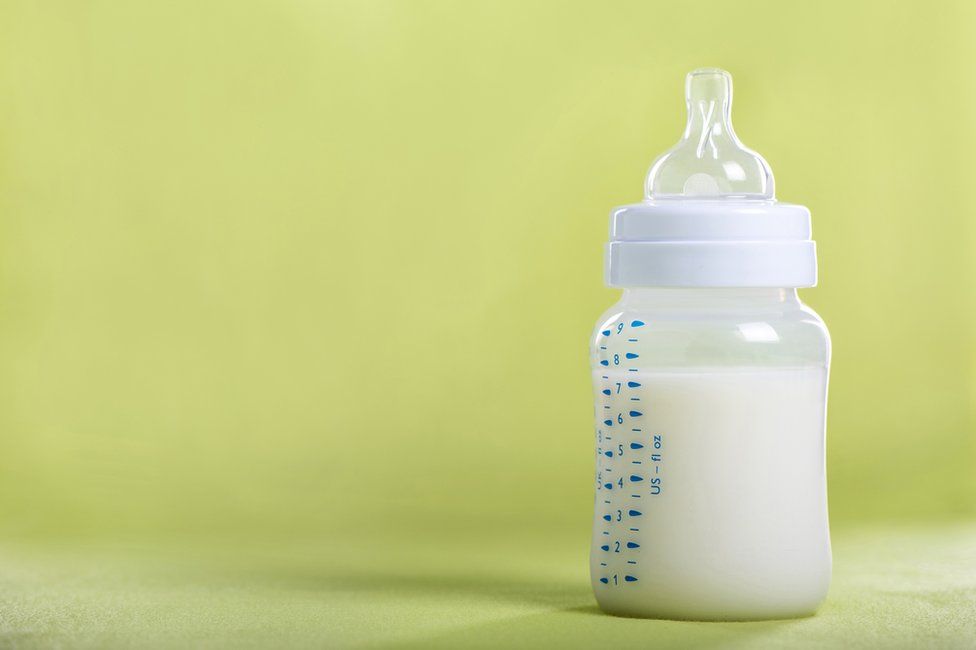 So, for feeding crumbs from birth to six months, a volume of 125 ml is suitable. And a one-year-old baby will need 330 ml. Try to get a bottle that has a clearly marked measuring scale so that you can easily mark how much food you cooked and how much the child ended up eating.
So, for feeding crumbs from birth to six months, a volume of 125 ml is suitable. And a one-year-old baby will need 330 ml. Try to get a bottle that has a clearly marked measuring scale so that you can easily mark how much food you cooked and how much the child ended up eating.
If you are breastfeeding, one or two bottles will be enough to give your baby expressed milk and medicine, water or juice while you are away. If the baby is bottle-fed, you will need at least six bottles - for 5-8 feedings per day.
Care instructions
Wash the bottle and teat before each use. To do this, use special detergents and a brush. The immune system of a newborn baby is practically absent and up to six months it is susceptible to any infections, which is why it is so important to sterilize the feeding bottle often, and then leave it in the air until it is completely dry. Sterilize both the pacifier and the bottle after every feeding. To do this, just fill them completely with water and boil for 5 minutes.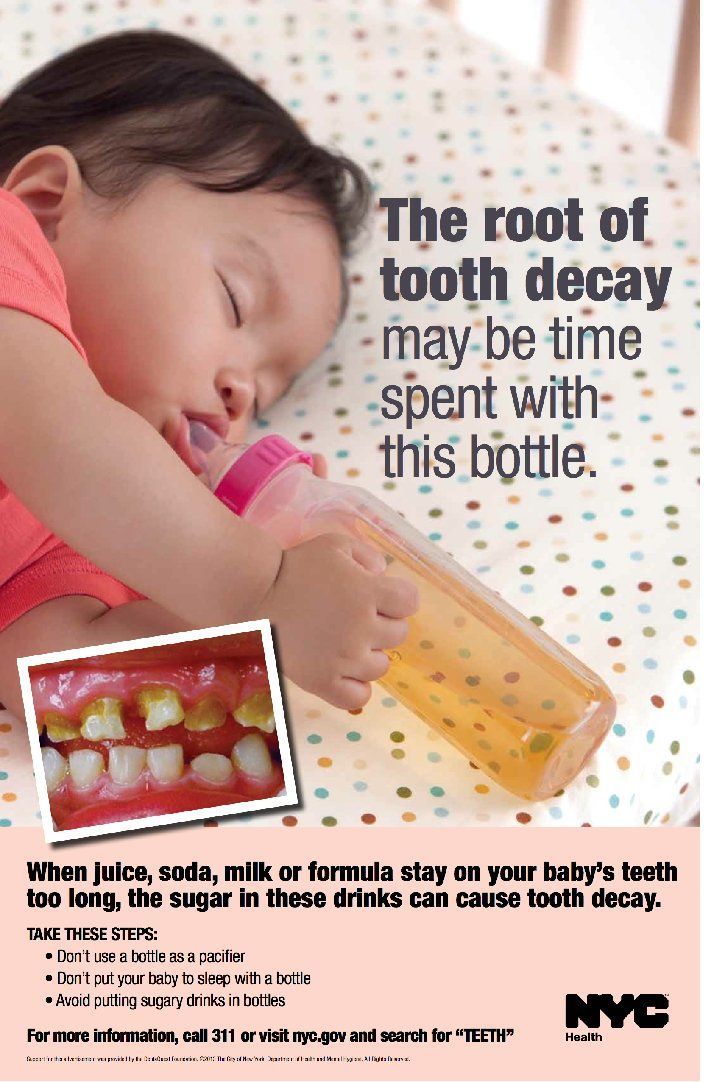 It is convenient to use a microwave sterilizer, it can also be done in a double boiler or multicooker with the appropriate function. A more expensive option is an electric sterilizer. Another mandatory element is a cap that protects the nipple from external influences between feedings.
It is convenient to use a microwave sterilizer, it can also be done in a double boiler or multicooker with the appropriate function. A more expensive option is an electric sterilizer. Another mandatory element is a cap that protects the nipple from external influences between feedings.
Accessories
-
It is convenient to buy bottles not individually, but in whole sets. They usually include everything you need: bottles of different sizes, a basic set of nipples, caps, coasters, brushes for washing nipples and bottles, and more.
-
The detachable handle will be needed when your baby can hold the bottle by himself.
-
The bottle is easy to carry around in the dedicated compartment or in your purse. If you need the liquid in the bottle to be at a certain temperature for a while, use a thermos bag. In summer, it will keep the bottle cool, and in winter it will not let it get cold.
- Photo
- dm909/Getty Images/Moment Open
Helpful Hints
-
Pay attention to size: bottles should fit easily in a drawer, sterilizer, refrigerator.
